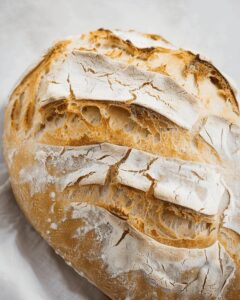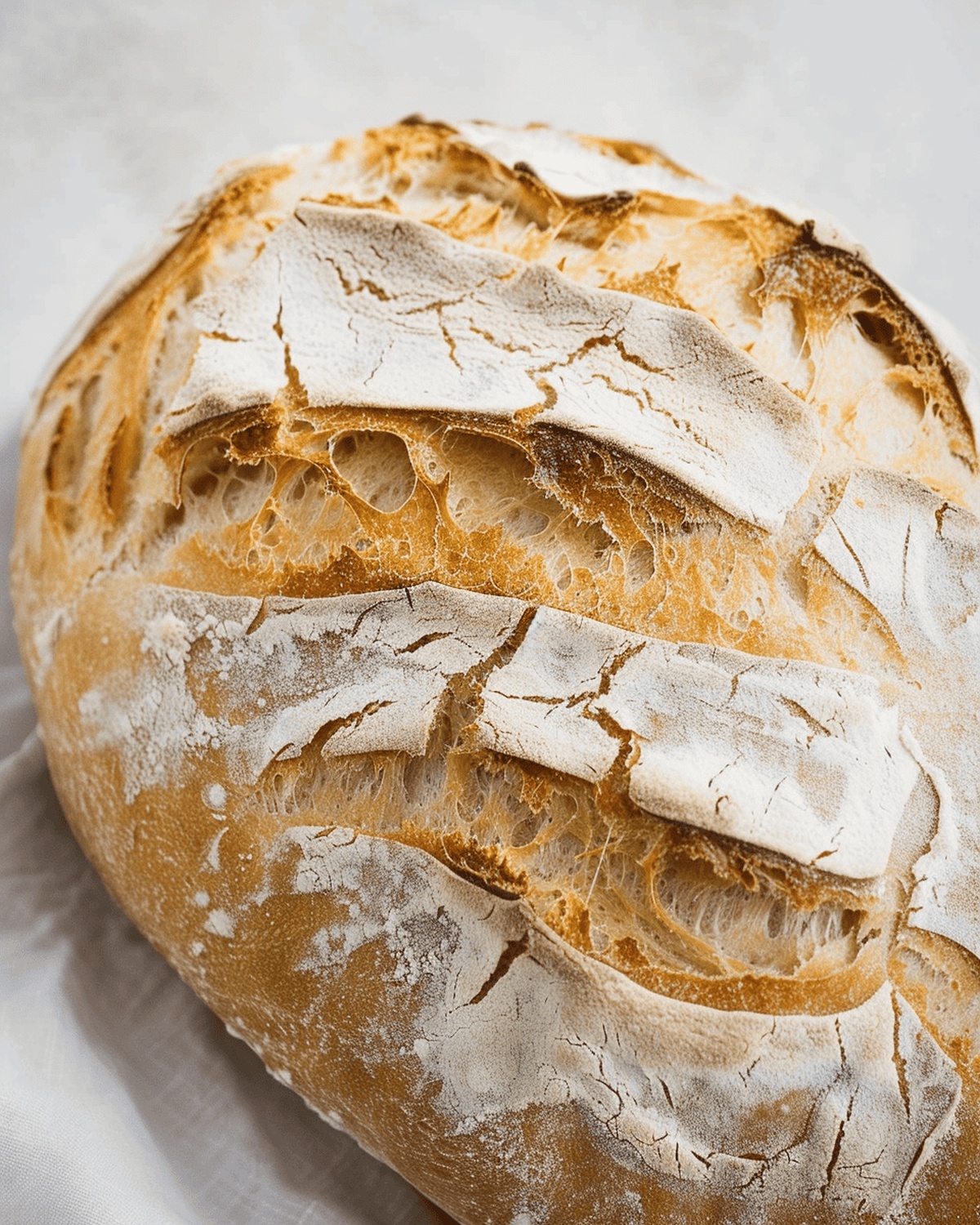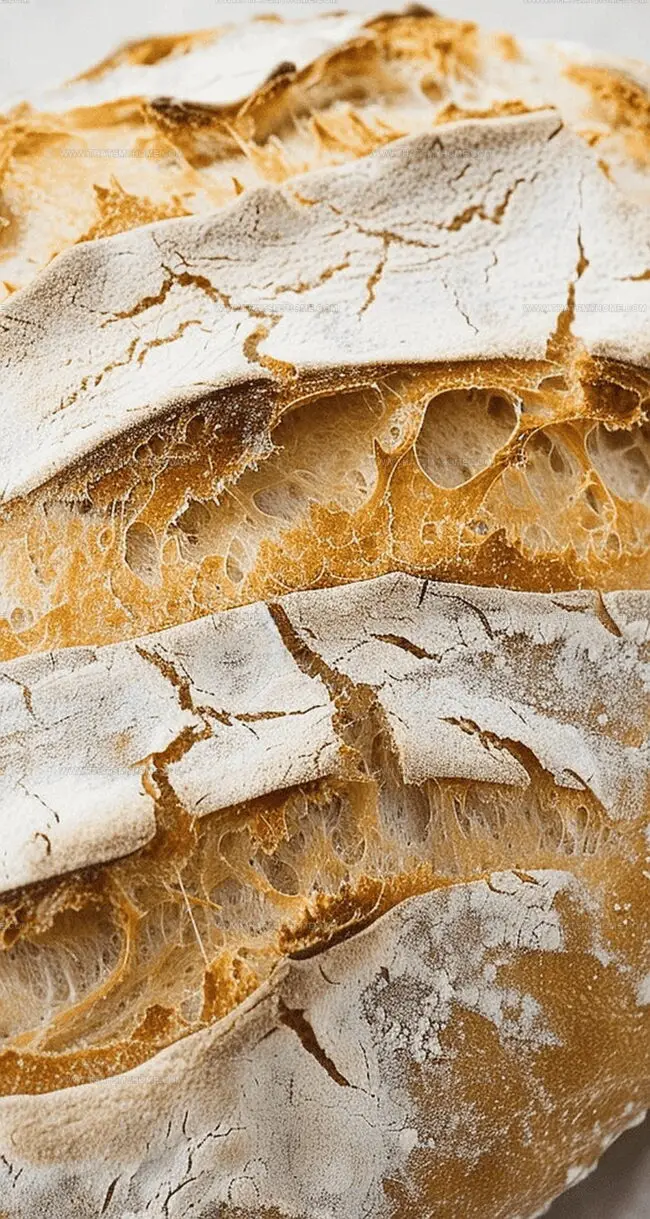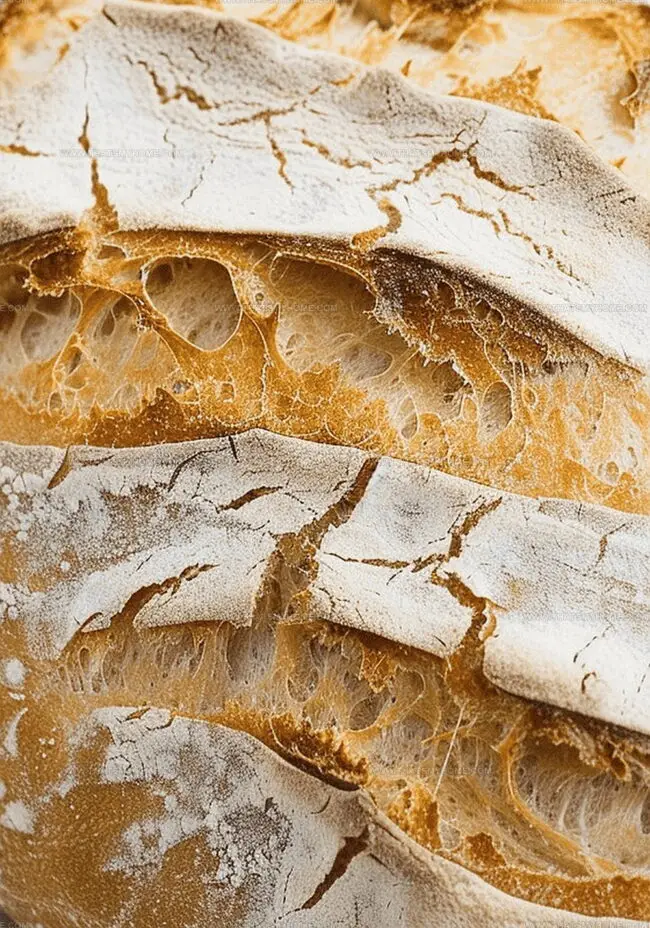The Perfect Artisan Bread Recipe for Beginners to Master
Artisan bread revamps ordinary flour and water into a culinary masterpiece that whispers stories of tradition and craftsmanship.
Small bakeries and passionate home cooks have elevated this humble staple into an art form celebrating texture, flavor, and technique.
Hand-crafted with meticulous care, these loaves boast irregular crumb structures and complex taste profiles that commercial breads cannot replicate.
Skilled bakers rely on natural fermentation, carefully selected ingredients, and time-honored techniques to create something extraordinary.
Each loaf represents a delicate balance between science and creativity, promising depth and character in every slice.
The magic lies in slow proofing, gentle handling, and respect for fundamental baking principles.
Prepare to embark on a delicious journey that connects you with centuries of baking wisdom.
Artisan Bread, Fresh from Your Oven
Must-Have Ingredients for Artisan Bread
Dry Ingredients:Liquid Ingredients:Additional Ingredients:How to Make Perfect Artisan Bread
Step 1: Mix the Bread Base
Combine dry ingredients in a large bowl:Slowly pour warm water (105°F) while stirring until mixture becomes slightly sticky and well blended.
Step 2: Let the Dough Rest and Ferment
Cover the bowl with a clean towel or plastic wrap. Allow the dough to rise at room temperature for 2-10 hours or overnight for deeper flavor development.
Step 3: Shape Your Bread Masterpiece
Wet your hands to prevent sticking. Gently transfer dough onto a lightly floured surface. Carefully pull sides toward the center, creating a smooth round loaf or two smaller loaves.
Step 4: Prepare for Baking
Place shaped dough on parchment paper. Dust the top with a light flour coating. Create decorative slashes across the surface using a sharp bread knife.
Step 5: Final Rise
Let the shaped dough rest for 20-30 minutes, allowing it to rise slightly before baking.
Step 6: Preheat the Oven
Set oven temperature to 450°F. Place baking stone or Dutch oven inside to heat thoroughly.
Step 7: Create Steam Environment
Prepare steam by:Step 8: Bake to Golden Perfection
Carefully slide parchment paper with dough onto heated surface. Bake for 25-30 minutes until golden brown appears.
Step 9: Cool and Serve
Remove bread from oven. Allow to cool completely on a rack for at least 30 minutes. Slice and enjoy your homemade artisan bread.
Step 10: Store Properly
Keep remaining bread in a paper bag to maintain crispness and freshness.
Tips for the Ultimate Artisan Bread
Storing and Reheating Artisan Bread
Pairing Artisan Bread with Soups and Dips
Fun Variations of Artisan Bread
Print
Artisan Bread Recipe
- Total Time: 20 minutes
- Yield: 12 1x
Description
Artisan bread showcases rustic simplicity with minimal ingredients and maximum flavor. Handcrafted with traditional techniques, this European-style loaf connects home bakers to centuries of bread-making heritage you can savor slice by slice.
Ingredients
Main Ingredients:
- 3 cups (395 grams) all-purpose flour or bread flour
- 1.5 cups warm water at a temperature of 105°F
Flavoring:
- ½ tablespoon kosher salt
Leavening Agent:
- ¼ ounce (2 ¼ teaspoons) instant or active dry yeast packet
Instructions
- Gather a spacious mixing vessel and combine organic wheat flour, sea salt, and active dry yeast, ensuring uniform distribution of ingredients.
- Carefully introduce lukewarm water (105°F or 40.5°C) into the dry mixture, maintaining a precise temperature to activate yeast without compromising its delicate structure.
- Utilize a specialized dough whisk or robust wooden utensil to integrate ingredients, creating a cohesive yet slightly viscous texture that remains soft and malleable.
- Envelop the mixing bowl with a breathable kitchen towel or perforated plastic wrap, allowing the dough to ferment and develop complex flavors for 2-10 hours at ambient room temperature.
- Moisten hands with cool water before transferring the elastic dough onto a lightly dusted work surface, preventing excessive adherence.
- Gently manipulate the dough’s periphery, folding edges inward to create a rounded silhouette without aggressive compression, forming either a singular circular loaf or divided smaller portions.
- Position shaped dough onto parchment paper, delicately sprinkling additional flour across its surface and creating artistic diagonal incisions using a razor-sharp bread knife.
- Allow the formed loaf a secondary proofing period of approximately 25-35 minutes, enabling additional volume expansion and structural refinement.
- Simultaneously activate oven to 450°F (232°C), strategically positioning a heavyweight ceramic baking stone or cast-iron Dutch oven to generate intense thermal environment.
- Meticulously transfer parchment-laden dough into preheated cooking vessel, ensuring minimal heat dissipation during introduction.
- Enhance crust development by introducing moisture through dispersing five ice cubes or pouring minimal hot water into a secondary pan, generating instantaneous steam.
- Monitor baking progression, rotating vessel midway to guarantee uniform golden-brown coloration across entire surface.
- Extract bread after 25-30 minutes, confirming doneness through resonant hollow sound when tapping bottom crust.
- Transfer artisan creation onto cooling rack, permitting complete temperature equilibration for minimally 45 minutes before slicing.
- Store remaining bread within breathable paper container, preserving textural integrity and preventing premature staleness.
Notes
- Always use fresh, high-quality ingredients for the most delectable artisan bread experience.
- Fermentation transforms simple ingredients into a complex, tangy flavor profile that elevates homemade bread.
- Water temperature matters critically; lukewarm liquid between 100-110°F activates yeast without killing its delicate microorganisms.
- Letting dough rest overnight develops deeper, more nuanced taste and improves overall texture and crumb structure.
- Steam during baking creates that professional bakery-style crispy, golden crust that makes every slice irresistible.
- Prep Time: 10 minutes
- Cook Time: 10 minutes
- Category: Lunch, Dinner, Snacks
- Method: Baking
- Cuisine: European
Nutrition
- Serving Size: 12
- Calories: 130 kcal
- Sugar: 0 g
- Sodium: 150 mg
- Fat: 0 g
- Saturated Fat: 0 g
- Carbohydrates: 27 g
- Fiber: 1 g
- Protein: 4 g
- Cholesterol: 0 mg




Mary Ellen
Founder, Pastry Chef & Recipe Developer
Expertise
Education
Savannah Technical College
Mary Ellen is the heart and soul of thatsmyhome.com. As the founder, pastry chef, and recipe developer, she refined her skills at Savannah Technical College with an Associate of Applied Science in Culinary Baking & Pastry Arts.
Mary blends classic techniques with modern twists to make artisanal breads, beautifully crafted pastries, and desserts full of unique flavor. Her passion is evident in every recipe, and she enjoys sharing her expertise through hands-on pastry workshops and insightful articles in local culinary magazines.